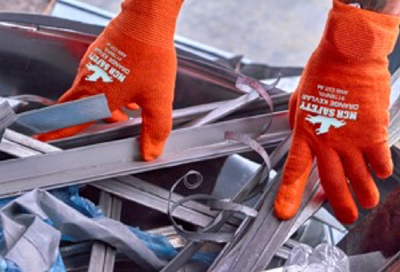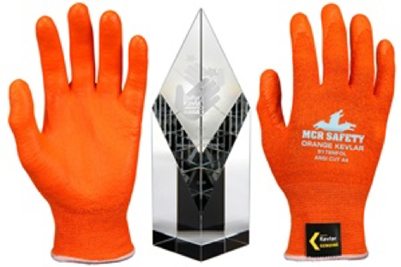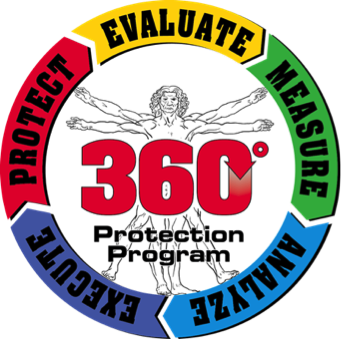There are 4.5 million reported injuries in the metal manufacturing industry each year in the United States alone. This does not even include the innumerable near-accidents that might have resulted in injury, had luck or quick thinking not intervened.
Unguarded machinery, sharp metal, toxic chemicals and dust are just some of the hazards metalworkers face every day. Occupational Safety and Health Association (OSHA) highlights in the following table how metal product manufacturing operations pose a high probability of injuring workers.
| Calendar Year | Private Industry Average | Construction Industry Average | Fabricated Metal Average |
|---|---|---|---|
| 2011 | 1.8 | 2.1 | 2.6 |
| 2012 | 1.8 | 2.1 | 2.9 |
| 2013 | 1.7 | 2.2 | 2.6 |
| 2014 | 1.7 | 2 | 2.4 |
| 2015 | 1.6 | 2 | 2.3 |
Metal fabrication’s number of injuries, per 100 people, is higher than all private industry and construction.
There are dozens of different ways to become injured when working with metals. Here are the top five ways metalworkers are likely to be injured:
Material Handling Injuries
Worker’s hands are exposed to numerous hazards throughout the metal fabrication process, one of those being material handling. With over 47,000 laborers moving materials by hand in metal fabrication, gloves are definitely necessary. At some point, every machine shop worker, assembler, fabricator, and welder will have to handle materials, mostly metal.
Here are some frequent examples of material handling:
- Unloading and loading metalwork pieces can easily scrape up a worker’s hands.
- Small parts handling and metal can easily injury a metalworker’s hands, ranging from injuries to ligaments, muscles and tendons. Metals come in various forms, ranging from those that are oily to some being extremely sharp.
- There are over 130,000 sheet metal workers in the US handling large sheets of metal.
- For all the safety gear needed, be sure to check out our sheet metal industry page.
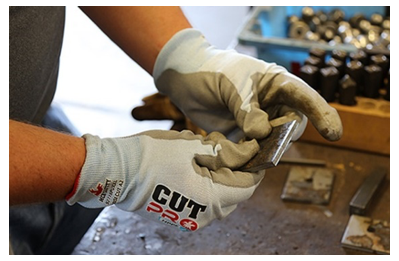
Sharp Metal
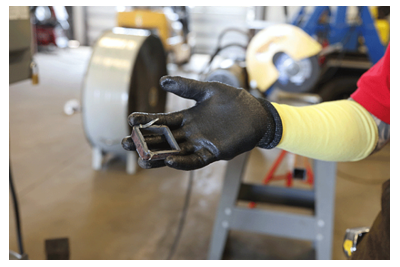
Sharp Metal Burr
For more information on manual material handling, check out the CDC ergonomic guidelines and checklist.
Cuts and Abrasions
Bare skin is excellent at keeping infection on the outside and blood on the inside, but that only works while the skin is intact. Unfortunately, sharp metal materials, tools used in metalworking, and razor-sharp sheet metal edges will slice up a worker’s hands in a flash. There are over 130,000 sheet metal workers in the US handling large sheets of metal.
Gloves are critical, as hands and fingers are often the closest part of the body to danger. Look for an appropriate ANSI rating for cuts, abrasions, or punctures depending on the unique hazards and materials you’re working with.
9178NFO is excellent for handling sharp metal and is worn by countless metalworkers. Shortly after being introduced in early 2015, Orange Kevlar was awarded ISHN’s Choice Award for most innovative PPE.
Be sure you to take extra care, whenever handling materials and sharp metals. For all the safety gear needed, be sure to check out our sheet metal industry page.
"Knowing is half the battle"
Knowing the above lab scores provides an excellent starting point in determining the best heat resistant glove to wear.
Eye Injuries
There are two really sad things about eye injuries on the job. The first is how common they are: more than 2,000 eye injuries occur every day in the United States. The second is how easily preventable most of these injuries are: 90% of eye injuries could have been prevented had the person been wearing appropriate eye protection.
In the metalworking industry, eye injuries are most likely caused by flying metal fragments, projectiles, dust, and other debris kicked up by machinery. Other causes include chemical splashes and objects that fall, swing or that are pushed into the eye.
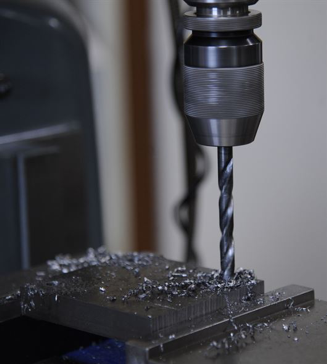
Metal Fragments
Choosing safety glasses or goggles that suit the particular hazards of your environment can save you from a painful injury or even blindness. Check out our eyewear protection page to learn more.
Repetitive Strain Injuries
When we think of metalworking, it’s easy to think of more acute injuries, like serious cuts and amputations. But the most common injuries don’t occur all at once, they develop over time. Repetitive strain injuries usually affect the joints of people who repeatedly do work involving lifting, force, vibrations, and awkward positions, all of which are common in metalworking.
Examples of repetitive strain injuries include carpal tunnel syndrome, tendinitis, bursitis, and rotator cuff syndrome. While they don’t develop overnight, the pain and reduced range of motion from repetitive strain injuries can cause workers to lose time or even become permanently unable to return to their former line of work.
You can prevent repetitive strain injuries by maintaining good posture, regularly varying how you do your work, resting when needed, and by making sure you have sufficient physical conditioning to do your work with relative ease.
Burns
Exposure to hot metal is all too common for metalworkers. Machine parts, equipment, sheet metal, and metalwork pieces quickly get hot and are always a concern for metalworkers! Sheet metal is highly conductive, meaning it heats up around sources of heat.
There are over 56,000 workers assembling and fabricating in the structural metal manufacturing sub-industry. These workers move a lot of metal around job sites; often metal that has been cooking under the hot sun.
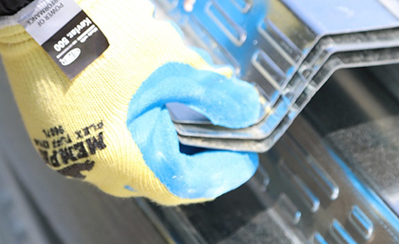
The 9687 is made of DuPont Kevlar, which is excellent for heat resistance.
MCR Safety’s accredited ISO 17025 ITC lab tests gloves for conductive heat resistance, in accordance with the ANSI/ISEA 105:16 standard and the ASTM F1060-08 test method. This testing allows us to classify glove performance based on the contact (surface) temperature at which both the time-to-second degree burn is equal to or greater than 15 seconds, and the alarm time is greater than 4 seconds. Here are testing results for three top selling cut resistant gloves:
There are many factors for determining protection needed when handling hot objects, such as weight of the object, dexterity required, and handling time. However, the above testing does provide clarity for which gloves perform best in a lab setting. “Knowing is half the battle” – G.I. Joe. Knowing these lab scores provides an excellent starting point in determining the best heat resistant glove to wear.
MCR Safety offers free heat testing for any gloves a user would like tested, so please don’t hesitate to ask us. It’s just one of the many ways we stand behind our statement of, “We Protect People!”
Other Metal Fabrication Injuries
We have only covered some of the top injuries that metalworkers face. Here are a handful more to consider:
- Getting entangled in equipment and conveyor belts
- Injuries from poor machine guarding
- Injuries from power tools
Not Sure What Kind of Gear You Need to Keep Your Workers Safe?
Our 360° Protection Program will not only help you analyze you analyze the specific risks in your workplace, but to work with you to find the ideal safety solutions that fit your needs, budget, and vision for future growth.
Lack of safety knowledge is often one of the most dangerous hazards. Click the image and request on our trained 360 specialists to visit your machine shop.
For over 40 years, MCR Safety has proven to be a leader in gloves, glasses, and garments. Whether it’s on the shop floor, an oil rig, or construction site, we are there providing solutions to workplace hazards. We Protect People!
Learn more about MCR Safety. For more information, browse our website, request a catalog, find a distributor, or give us a call at 800-955-6887.
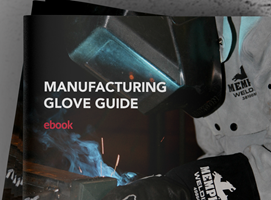
Manufacturing Glove Guide eBook
About the Author
Related Articles
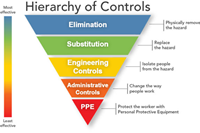
Five Rules for Metal Manufacturing Safety, OSHA's Hierarchy of Controls
Five Rules for Metal Manufacturing Safety OSHAs Hierarchy of Controls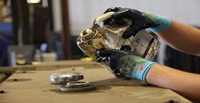
Machine Shop Hazards
To the uninitiated, a machine shop can look a lot like a torture chamber, and with good reason....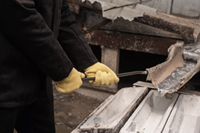
Which Gloves to Wear When Working with Certain Metals
Do certain metals require different gloves than others? Simply put, the answer is not exactly.Latest Articles





